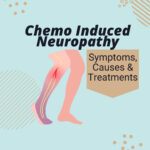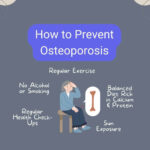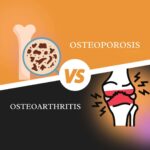Red light therapy is a marketing term that usually refers to devices that send visible red light and invisible near-infrared light to our skin to stimulate natural processes in our body. The biological mechanisms are different to infrared therapy, which produces thermal energy in the body. Scientifically, red light therapy is most commonly referred to as low level laser therapy or photobiomodulation.
For the purpose of this comparison, we are looking at the red light therapy pros and cons of devices that emit both red and infrared light as those have the biggest health benefits. However, some devices designed for skin applications may only emit the visible red light.
Get ready to discover all the red light therapy pros and cons to understand whether the therapy is right for you.
Red Light Therapy Pros
Safe and Painless Treatment Option
Red light therapy is a safe and painless treatment option that offers numerous health benefits. Whether you’re looking to improve your skin’s appearance or alleviate pain, red light therapy provides a gentle and effective approach.
Unlike other invasive treatments for skin health or pain management, red light therapy does not involve any needles, incisions, or medications and does not have any negative side effects. This makes it a popular choice for people seeking non-invasive solutions for their health.
Wide Range of Health Benefits
One of the most significant advantages of red light therapy is its wide range of health benefits. This treatment has been found to be beneficial for various conditions and concerns. For instance, it can enhance skin tone, texture, and elasticity, helping you achieve a more youthful appearance.
Red light therapy has been shown to relieve joint pain, knee pain, back pain, neuropathic pain, and arthritic pain. It promotes muscle recovery after intense workouts and may even boost athletic performance.
No Downtime or Recovery Period Required
Unlike many other medical procedures or treatments, red light therapy does not require downtime or recovery periods. After each session, you can simply carry on with your day without any restrictions or limitations.
Short, Simple, and Convenient At-Home Treatment Options
Red light therapy offers short treatment sessions that are simple to perform in the comfort of your own home. With the availability of portable devices designed specifically for at-home use, you can easily incorporate this therapeutic practice into your daily routine.
Improves Skin Tone, Texture, and Elasticity
Red light therapy has been proven to improve skin tone, texture, and elasticity. The treatment stimulates collagen production in the skin, which plays a crucial role in maintaining its firmness and youthful appearance. By promoting collagen synthesis, red light therapy helps reduce the appearance of wrinkles, fine lines, and age spots. It can also enhance overall skin clarity and radiance.
Relieves Pain and Promotes Muscle Recovery
Whether you suffer from chronic joint pain or experience muscle soreness after intense workouts, red light therapy can provide relief. Red light therapy helps relieve pain by increasing cellular energy to stimulate various biological processes that reduce pain and inflammation. It also promotes muscle recovery by increasing blood flow to the affected areas. This improved circulation helps deliver essential nutrients to the muscles while removing waste products more efficiently.
Visit CuraYou for a full breakdown of benefits and an analysis of the scientific research of red light therapy for pain management.
Red Light Therapy Cons
Results may vary depending on individual response
One of the cons of red light therapy is that results can vary depending on an individual’s response to the treatment. While many people experience positive outcomes, it’s important to recognize that not everyone will see the same level of improvement. Factors such as skin type, age, overall health, and adherence to the recommended treatment plan can all influence the effectiveness of RLT.
For some individuals, noticeable improvements may be seen after just a few sessions, while others may require more frequent treatments over a longer period to achieve desired results. It’s essential to have realistic expectations and understand that patience and consistency are key when undergoing this type of therapy.
Multiple sessions are often required for optimal results
Another drawback of red light therapy is that multiple sessions are usually necessary to obtain optimal results. This means committing to regular appointments and potentially investing both time and money into the treatment. Luckily, there are numerous medical red light therapy devices specifically designed for use at home.
Not recommended for pregnant women or individuals with light or skin sensitivities
Red light therapy is generally considered safe for most individuals; however, there are certain groups who should avoid or use caution when considering this treatment. Pregnant women should refrain from using red light therapy due to limited research on its effects during pregnancy.
Individuals with light or skin sensitivities should exercise caution as prolonged exposure to intense red light could potentially cause adverse reactions such as rashes or irritation.
It’s always best to consult with a healthcare professional before starting any new treatment if you have concerns about how your body might react.
Limited scientific evidence supporting some claimed benefits
While red light therapy has gained popularity for its potential health benefits, it’s important to acknowledge that there is still limited scientific evidence supporting some of the claimed advantages. While numerous studies have shown promising results in areas such as skin rejuvenation, pain management, and wound healing, more research is needed to fully understand the mechanisms behind these effects.
For example, experts are unclear whether RLT helps with cancer treatment. For fat loss, red light therapy may only have benefits in combination with a balanced diet and regular physical activity.
It’s crucial to approach any claims with a critical eye and rely on reputable sources when assessing the potential benefits.
It is not a cure-all and may only be recommended as a complementary treatment
Red light therapy should not be viewed as a cure-all solution for various health issues. In some cases, it may only be recommended as a complementary treatment alongside other interventions.
Make sure to consult with healthcare professionals who can provide guidance tailored to your specific needs and circumstances if you are uncertain.
What Does Red Light Therapy Help With
Pain Management
Whether you’re dealing with muscle soreness, joint pain, or the symptoms of arthritis, this innovative therapy can provide much-needed relief. The red light penetrates deep into your tissues, stimulating healing and reducing inflammation. This not only alleviates discomfort but also promotes faster recovery after intense workouts or injuries.
Inflammation
Inflammation is at the root of many health issues, from chronic diseases to acute injuries. Research has shown that red light therapy can reduce inflammation.
Skin Aging
RLT stimulates collagen production in your skin cells, which helps improve elasticity and reduce the visible signs of aging.
As we age, our body’s natural collagen production slows down, leading to sagging skin and wrinkles. With regular sessions, you’ll notice smoother skin texture and a more youthful appearance.
Acne
Red light therapy offers a non-invasive and drug-free approach to managing acne. It helps reduce inflammation and kill the bacteria that contribute to breakouts, leading to clearer skin over time. By targeting the sebaceous glands in your skin, red light therapy can regulate oil production and prevent clogged pores. This reduces the likelihood of new pimples forming and helps improve overall skin texture.
Hair Loss
Hair loss is a common concern for both men and women. Red light therapy has gained popularity as a potential solution for stimulating hair growth. By improving blood flow to the scalp and stimulating hair follicles, it may help promote thicker, healthier hair.
When And How To Use Red Light Therapy
Achieving the Best Results
To maximize the benefits of red light therapy, it is important to follow a consistent routine. Regular sessions over a period of at least 3-4 weeks have been found to yield the best results. This means incorporating red light therapy into your daily or weekly schedule and sticking to it diligently.
It may take some time for noticeable improvements, but with patience and persistence, you can experience its full potential.
Following Manufacturer’s Guidelines
Each device or product used for red light therapy may come with specific guidelines on duration and frequency of treatments. It is crucial to carefully read and adhere to these instructions provided by the manufacturer. They are designed to ensure safe and effective usage.
Protecting Your Eyes
While undergoing red light therapy, it is essential to prioritize eye safety. The intense wavelengths emitted during these sessions can potentially harm your eyes if not protected adequately. Therefore, wearing proper eye protection during each session is crucial.
Red Light Therapy At Home vs Clinic
Thanks to the tremendous advancements in technology over the last decade, individuals can now enjoy the benefits of red light therapy in the comfort of their own homes. There are various devices available for home use, including handheld devices or full-body panels.
When choosing a red light therapy device for home use, make sure to choose a device that is FDA-cleared. You may also want to consider portability. Some devices require to be plugged in, limiting their mobility and flexibility. On the other hand, there are portable options available that allow you to move freely during your therapy sessions.
Attending red light therapy sessions at a clinic introduces an element of accountability that can be beneficial for maintaining consistency in your treatment plan. Consistency plays a crucial role in achieving desired outcomes with red light therapy.
Another advantage associated with receiving red light therapy treatments at a clinic is the opportunity for personalized treatment plans tailored to your individual needs and goals. Clinics can assess your medical history, current health conditions, and desired outcomes to determine the frequency of sessions required for your goals.
One significant concern is the cost associated with these treatments. Moreover, undergoing red light therapy at a clinic requires a significant time commitment.
Evaluating Red Light Therapy Pros and Cons
Now that we’ve explored the red light therapy pros and cons, you have a better understanding of its potential benefits and limitations. Red light therapy offers a non-invasive and drug-free approach to various health concerns that can be used conveniently at home.
Since there are no known negative side effects to red light therapy, giving red light therapy a try is well worth it. A lot of devices come with a convenient money-back guarantee that minimizes the uncertainty of the therapy.
Consulting with a healthcare professional who can evaluate your specific needs and provide personalized guidance is always a great idea as well.
FAQs
How long does it take to see results from red light therapy?
The time it takes to see results from red light therapy can vary depending on the individual and their specific condition or concern. Some people may notice improvements after just a few sessions, while others may require several weeks of consistent use before seeing noticeable changes.
Can I use red light therapy alongside other treatments?
Yes, red light therapy is often used as a complementary treatment alongside other therapies.
Are there any age restrictions for using red light therapy?
Red light therapy is generally safe for all ages, but it’s always a good idea to consult with a healthcare professional, especially when considering its use on children or infants. They can provide guidance on the appropriate settings and duration of sessions for different age groups.
Is red light therapy the same as infrared?
Yes and no. Red light therapy is commonly used as a term that covers both red and infrared light. However, red light has a different wavelength compared to infrared light.
Red light is most beneficial to skin-related issues, such as the production of collagen, reduction of inflammation, and aiding in the wound healing process.
Infrared light can penetrate deeper into tissues and thus is most beneficial for the treatment of muscle and joint pain, improving blood circulation, and reducing inflammation in the deeper tissues.
References
DE Oliveira MF, Johnson DS, Demchak T, Tomazoni SS, Leal-Junior EC. Low-intensity LASER and LED (photobiomodulation therapy) for pain control of the most common musculoskeletal conditions. Eur J Phys Rehabil Med. 2022 Apr;58(2):282-289. doi: 10.23736/S1973-9087.21.07236-1. Epub 2021 Dec 16. PMID: 34913330; PMCID: PMC9980499.
DE Oliveira MF, Johnson DS, Demchak T, Tomazoni SS, Leal-Junior EC. Low-intensity LASER and LED (photobiomodulation therapy) for pain control of the most common musculoskeletal conditions. Eur J Phys Rehabil Med. 2022 Apr;58(2):282-289. doi: 10.23736/S1973-9087.21.07236-1. Epub 2021 Dec 16. PMID: 34913330; PMCID: PMC9980499.
Wunsch A, Matuschka K. A controlled trial to determine the efficacy of red and near-infrared light treatment in patient satisfaction, reduction of fine lines, wrinkles, skin roughness, and intradermal collagen density increase. Photomed Laser Surg. 2014 Feb;32(2):93-100. doi: 10.1089/pho.2013.3616. Epub 2013 Nov 28. PMID: 24286286; PMCID: PMC3926176.
Ferraresi C, Bertucci D, Schiavinato J, Reiff R, Araújo A, Panepucci R, Matheucci E Jr, Cunha AF, Arakelian VM, Hamblin MR, Parizotto N, Bagnato V. Effects of Light-Emitting Diode Therapy on Muscle Hypertrophy, Gene Expression, Performance, Damage, and Delayed-Onset Muscle Soreness: Case-control Study with a Pair of Identical Twins. Am J Phys Med Rehabil. 2016 Oct;95(10):746-57. doi: 10.1097/PHM.0000000000000490. PMID: 27088469; PMCID: PMC5026559.
Andrade Fdo S, Clark RM, Ferreira ML. Effects of low-level laser therapy on wound healing. Rev Col Bras Cir. 2014 Mar-Apr;41(2):129-33. English, Portuguese. doi: 10.1590/s0100-69912014000200010. PMID: 24918727.
Lanzafame RJ, Blanche RR, Bodian AB, Chiacchierini RP, Fernandez-Obregon A, Kazmirek ER. The growth of human scalp hair mediated by visible red light laser and LED sources in males. Lasers Surg Med. 2013 Oct;45(8):487-95. doi: 10.1002/lsm.22173. Erratum in: Lasers Surg Med. 2014 Apr;46(4):373. PMID: 24078483.
- Best Red Light Therapy Device 2024 for Pain Management – 16 October 2024
- How To Improve Gut Microbiome – 26 May 2024
- Chemo neuropathy treatment: What to do? – 19 May 2024






Leave a Reply